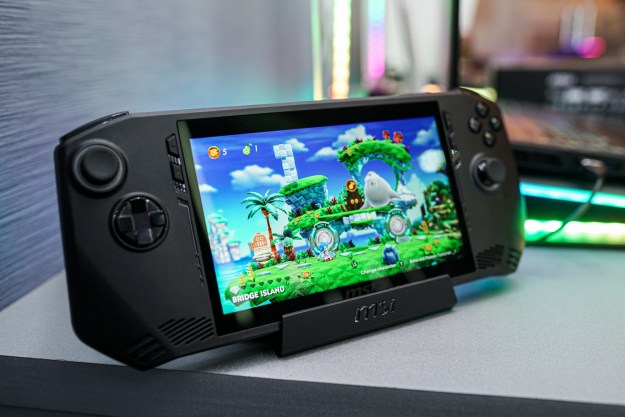
Valve just announced the Steam Deck OLED, which is an updated model of the original Steam Deck featuring a new OLED screen. Unlike the previous model, Valve is only selling two versions of the Steam Deck OLED, one with 512GB of storage and another with 1TB of storage for $550 and $650, respectively.
Although the OLED screen is the star of the show, Valve is making some upgrades elsewhere, too. The new design is now based on a 6nm APU, as opposed to the 7nm APU in the previous model, and it supports Wi-Fi 6E. The previous model only supported Wi-Fi 5.
The bump in wireless connectivity allows the OLED model to have downloads up to three times faster than the original Steam Deck, according to Valve. The 6nm chip is the same as the previous model in terms of performance, offering four Zen 2 CPU cores and 8 RDNA2 GPU cores, but it’s much more efficient. Valve says the new design has upwards of 50% better battery life than the original Steam Deck. Combined with a larger 50Whr battery, Valve says you can get up to 12 hours of battery life depending on what games you’re playing.
As for the display, it’s still using the 1280 x 800 resolution as the original Steam Deck, but with OLED now at the helm, it supports HDR, as well. It’s slightly larger, too, clocking in at 7.4 inches diagonally.
With the new OLED model, Valve is reducing the price of the original Steam Deck. The 64GB model is now $350, the 256GB model is $400, and the 512GB model is $450. The 64GB and 512GB models are being phased out, so they’ll only be available while supplies last.
Both models of the Steam Deck OLED go on sale on November 16 at 10 a.m. PT. At that time, Valve will also release a limited edition model of the 1TB version that comes with stark red contrasts on the vents, power button, and thumb sticks, along with a slightly transparent backplate.

Although Deck fans have been waiting for the Steam Deck 2, this is more of a Steam Deck 1.5. You shouldn’t expect huge performance gains over the original model, but with a boost to battery life, better Wi-Fi, and a nicer screen, it’s still a clear upgrade over the original model.
It fixes one of the key issues of the original Steam Deck, too. The screen isn’t very good, which is an area where devices like the ROG Ally and Lenovo Legion Go have an edge over Valve’s handheld. The OLED model might change that, but we’ll just have to wait until it’s finally here to know for sure.
Editors' Recommendations
- A Redditor ‘didn’t know’ about the Steam Deck, so they built their own
- Is this Razer’s Steam Deck killer?
- Steam Deck 2: release date speculation, specs, pricing
- Steam Spring Sale: best deals, how long is the sale, and more
- The Steam Deck OLED needs burn-in protection





